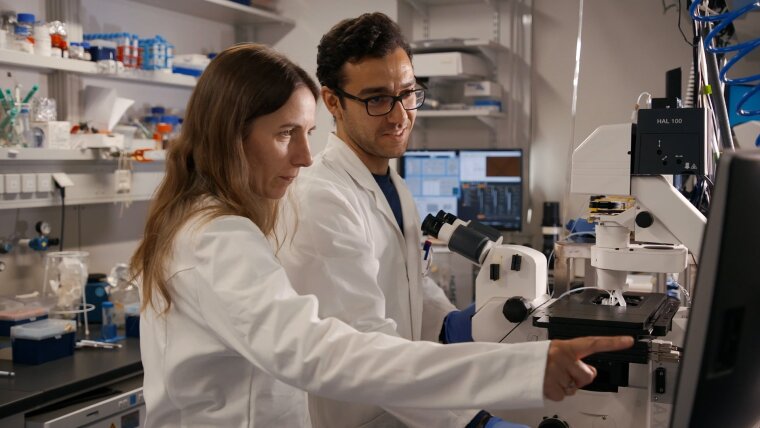The Cluster of Excellence »Balance of the Microverse« has received funding under the Excellence Strategy of the German federal and state governments since 2019. The research network is currently applying for an extension. Its multidisciplinary team aims to research the fundamental principles that govern the balance of microbial communities. The researchers want to use this knowledge to influence the dynamics of microbiomes in such a way that they have positive effects on the environment and human health.
Microbiomes consist of complex communities of microorganisms in different surroundings. They are of fundamental importance for ecosystems dynamics and influence numerous aspects; from human health to environmental stability.
Research Approach
The scientists in the Cluster of Excellence are investigating how microbiomes function and the mechanisms by which microorganisms interact with each other and with their environment. They develop methods and techniques to predict the dynamics of these communities and facilitate interventions that preserve or restore
the balance of the microverse.
Research Areas
In order to understand how complex and interconnected networks of interactions influence the structure, stability, and function of microbiomes, the researchers are investigating three key areas:
-
Communication through signalling
Microorganisms frequently communicate via chemical signals—small molecules that are released into their environment, perceived by other organisms and sometimes altered. The Cluster of Excellence aims to decipher the »chemical language« of microbes. The researchers want to understand how microorganisms recognize and react to these signals, and how this, in turn, affects the dynamics of their community.
-
Spatial and compositional structures
Another focus is on the spatial and structural properties of microbial communities and their influence on functions and stability. This involves questions including which organisms live together in which constellations, and how ecological and evolutionary processes are connected. The insights gained contribute to deciphering the mechanisms of
-
Transitions between states
Finally, the team is analysing how microbiomes transition from a stable state to a different state, for example from an intact gut microbiome to a pathological state. Their focus is on identifying key factors that determine the stability, resilience, and tipping points of microbial communities.
- Jena University HospitalExternal link
- Leibniz Institute for Natural Product Research and Infection Biology – Hans Knöll InstituteExternal link
- Leibniz Institute of Photonic TechnologyExternal link
- Leibniz Institute on Aging – Fritz Lipmann InstituteExternal link
- Max Planck Institute for Chemical EcologyExternal link
- Max Planck Institute for BiogeochemistryExternal link
- Max Planck Institute for GeoanthropologyExternal link
- Max Planck Institute for Evolutionary AnthropologyExternal link

